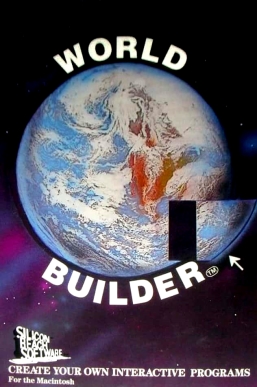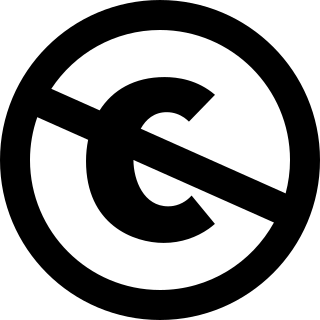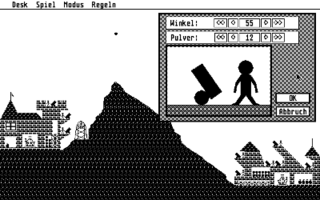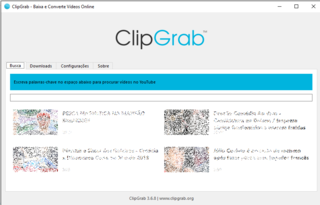Related Research Articles
Freeware is software, most often proprietary, that is distributed at no monetary cost to the end user. There is no agreed-upon set of rights, license, or EULA that defines freeware unambiguously; every publisher defines its own rules for the freeware it offers. For instance, modification, redistribution by third parties, and reverse engineering are permitted by some publishers but prohibited by others. Unlike with free and open-source software, which are also often distributed free of charge, the source code for freeware is typically not made available. Freeware may be intended to benefit its producer by, for example, encouraging sales of a more capable version, as in the freemium and shareware business models.
Shareware is a type of proprietary software that is initially shared by the owner for trial use at little or no cost. Often the software has limited functionality or incomplete documentation until the user sends payment to the software developer. Shareware is often offered as a download from a website. Shareware differs from freeware, which is fully-featured software distributed at no cost to the user but without source code being made available; and free and open-source software, in which the source code is freely available for anyone to inspect and alter.

z/OS is a 64-bit operating system for IBM z/Architecture mainframes, introduced by IBM in October 2000. It derives from and is the successor to OS/390, which in turn was preceded by a string of MVS versions. Like OS/390, z/OS combines a number of formerly separate, related products, some of which are still optional. z/OS has the attributes of modern operating systems but also retains much of the older functionality that originated in the 1960s and is still in regular use—z/OS is designed for backward compatibility.
Product activation is a license validation procedure required by some proprietary software programs. Product activation prevents unlimited free use of copied or replicated software. Unactivated software refuses to fully function until it determines whether it is authorized to fully function. Activation allows the software to stop blocking its use. An activation can last "forever", or it can have a time limit, requiring a renewal or re-activation for continued use.
Jim Knopf, nicknamed Jim Button, was considered by many to be one of the "fathers" of shareware. As an IBM employee, he wrote a program to help with a local church congregation. When demand for his program consumed too much of his time, he quit IBM and created Buttonware. He released his first program, PC-File, in late 1982 as "user supported software". He has been quoted as saying this expression not only reflected the optional payment model, but also that comments from users drove the development of later releases.

Autocomplete, or word completion, is a feature in which an application predicts the rest of a word a user is typing. In Android and iOS smartphones, this is called predictive text. In graphical user interfaces, users can typically press the tab key to accept a suggestion or the down arrow key to accept one of several.

GEOS is a discontinued operating system from Berkeley Softworks. Originally designed for the Commodore 64 with its version being released in 1986, enhanced versions of GEOS later became available in 1987 for the Commodore 128 and in 1988 for the Apple II. A lesser-known version was also released for the Commodore Plus/4.
Wintermute Engine (WME) is a set of software tools and a runtime interpreter primarily designed for creating and running graphical adventure games.

World Builder is a game creation system for point-and-click text-and-graphics adventure games. It was released for Macintosh in 1986 by Silicon Beach Software and had already been used for creating Enchanted Scepters in 1984. On August 7, 1995, developer William C. Appleton released World Builder as freeware.
DonationCoder.com is a website hosting a community of programmers and software fans. It supports a donation-based model to organize and finance software development, and is one example of Donationware.

Public-domain software is software that has been placed in the public domain, in other words, software for which there is absolutely no ownership such as copyright, trademark, or patent. Software in the public domain can be modified, distributed, or sold even without any attribution by anyone; this is unlike the common case of software under exclusive copyright, where licenses grant limited usage rights.

Filzip is a freeware file archiver program for the Microsoft Windows platform.

Ballerburg is a turnbased Artillery game from 1987, written in C by Eckhard Kruse for the Atari ST. The game was distributed free of charge as public domain software. It was also donationware as the author asked for donations of 20 DM, offering as incentive the source code for the game.
Program animation or stepping refers to the debugging method of executing code one instruction or line at a time. The programmer may examine the state of the program, machine, and related data before and after execution of a particular line of code. This allows the programmer to evaluate the effects of each statement or instruction in isolation, and thereby gain insight into the behavior of the executing program. Nearly all modern IDEs and debuggers support this mode of execution.
A revenue model is a framework for generating financial income. There can be a variety of ways for revenue generation such as the production model, manufacturing model, as well as the construction model. A revenue model identifies which revenue source to pursue, what value to offer, how to price the value, and who pays for the value. It is a key component of a company's business model. A revenue model primarily identifies what product or service will be created and sold in order to generate revenues.
TripleA is a free and open-source turn based strategy game based on the Axis & Allies board game.

ClipGrab is a donationware video download manager, allowing the download of videos from a variety of websites such as YouTube, Vimeo, Dailymotion or Facebook. It has been praised for its user-friendliness, but also flagged as malware by security software. It can convert the downloaded files to other file formats such as MP3, MPEG4, OGG Theora or WMV. It is published as free software under the terms of the GPL-3.0-or-later license. It is developed and maintained by Philipp Schmieder Medien of vanbittern.com.

Blobby Volley is a free and open-source sports computer game series in which two blobbed shaped entities play volleyball against each other. There are multiplayer and single-player modes.
References
- ↑ Milian, Mark (2011-06-13). "Reading apps sell subscriptions to fuzzy feelings". CNN . Retrieved 2014-05-22.
- ↑ April 1987: Ballerburg - Zwei Spieler, zwei Burgen und ein Berg dazwischen... on eckhardkruse.net "Ich habe das Programm als Public Domain veröffentlicht (die Unterscheidung in Freeware, Shareware usw. gab es damals nicht), mit der Bitte um eine 20 DM Spende. Dafür gab es dann die erweitere Version und den Quellcode." (in German)